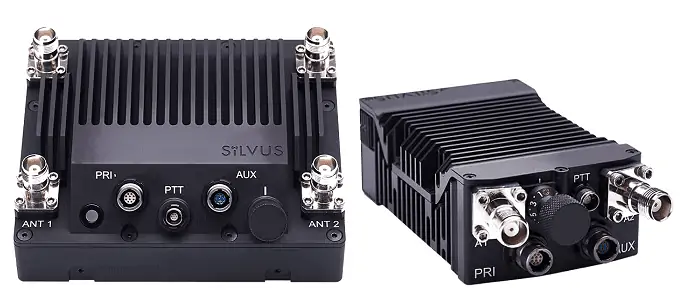 Silvus Technologies has announced today that it has released a new variant of its StreamCaster Enhanced radios covering 1350-1390MHz (L) and 2200-2500MHz (S) bands. StreamCaster radios provide a communications link with throughput, range, and robustness that is ideal for the mission-critical video, C2, health, and telemetry transmission needs of UAVs (unmanned aerial vehicles) and other unmanned vehicles.
Silvus Technologies has announced today that it has released a new variant of its StreamCaster Enhanced radios covering 1350-1390MHz (L) and 2200-2500MHz (S) bands. StreamCaster radios provide a communications link with throughput, range, and robustness that is ideal for the mission-critical video, C2, health, and telemetry transmission needs of UAVs (unmanned aerial vehicles) and other unmanned vehicles.
In an era of increased spectrum congestion and Electronic Warfare (EW) threats, the warfighter needs increased agility to operate across a multitude of frequencies to avoid both friendly and adversarial interference. The new dual L/S band radios, as well as other dual band StreamCaster radios, allow the user to change frequencies and bands (on the fly) without need for swapping hardware. These bands at lower microwave frequencies are of particular value for their ability to penetrate foliage and other obstacles. Even when one band is completely saturated with interference, the network can be quickly shifted to an alternate band in a frequency clear of interference.
Coupled with Silvus’ “MANET Interference Avoidance” (MAN-IA) feature, the selection of band and frequency can be automated, relieving the warfighter of the burden of frequency deconfliction. MAN-IA senses interference within the network footprint and automatically switches the network to a better channel. If MAN-IA detects the onset of electromagnetic interference in the current channel at any node in the network, MAN-IA will rapidly switch all radios in the network to a more suitable band/channel. This feature was designed to allow tactical users to operate through intentional or unintentional interference at operational tempo.
The new dual L/S band variant is available for both SC4200E (2×2 MIMO) and SC4400E (4×4 MIMO) models, and the MAN-IA feature can be licensed at the time of order or applied retroactively by loading a software license key.


















